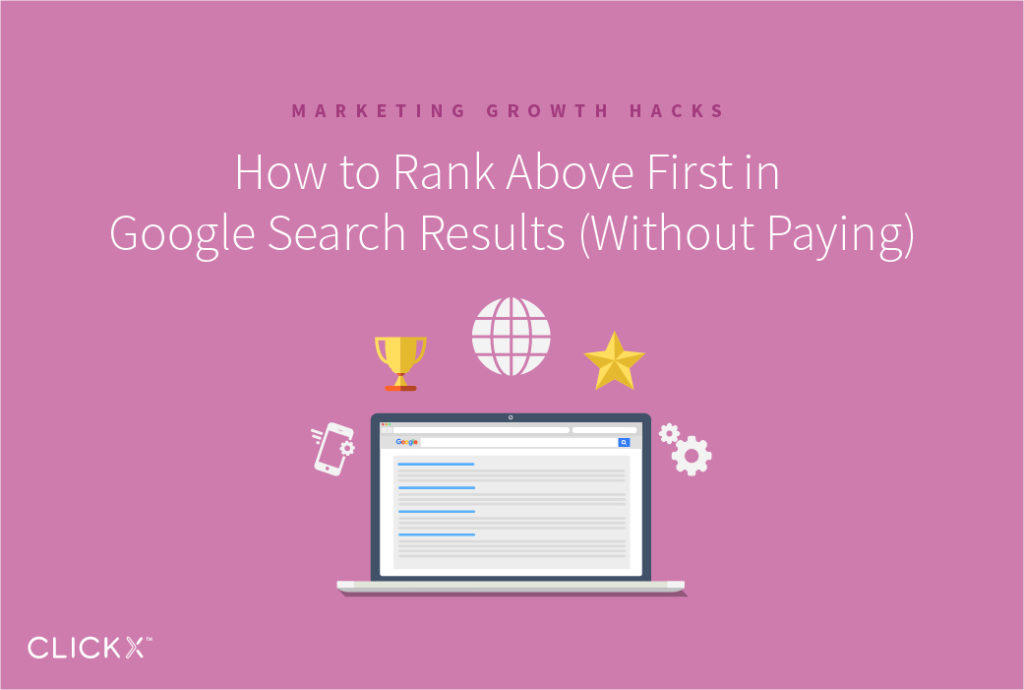How to Rank Above First in Google Search Results (Without Paying)
For website owners, the race to the top of Google can often feel like you need an enormous amount of wizardry (or money) to succeed.
However, there’s another way to reach to the summit without waiting in line. By getting chosen for Google’s featured snippets, your link gets highlighted at the top of search results. It may feel sneaky, but it’s legitimate—Google’s way of rewarding particularly useful content.
While Google doesn’t offer any clear instructions for inclusion in featured snippets, there are ways to encourage Google to list your site. In this post we’ll discuss the snippets themselves, before running through four steps to help increase your site’s chances of inclusion.
Let’s get started!

What Is a Featured Snippet?
Featured snippets are summaries of quality answers to specific questions people search for in Google. As the name indicates, they are featured at the top of the results, above normal listings. Featured snippets usually include a link to the page along with the page title.
[Tweet “Featured snippets are summaries of quality answers to specific questions people search in Google.”]
If you’re still not sure what we mean, here’s an example:

It’s important to remember that featured snippets are all about the questions people ask Google. This is where you can swoop in like the hero you are, with quality answers for the masses.
Your site certainly has no guarantee of being included within Google’s featured snippets, but your chances are dramatically increased when you target the long-tail keywords you hope to rank for with a properly structured landing page.
How to Rank Above First in Google Search Results (Without Paying)
Ranking for a featured snippet is all about becoming the go-to website for the right questions. Choose your question, then write a summarized answer followed by an in-depth post. With the right formatting, you make it incredibly easy for Google to understand what your page is all about.
Let’s take each step in turn.
[Tweet “Ranking for a featured snippet is all about becoming the go-to website for the right questions.”]
Step 1: Identify Common Questions
Here are a few methods for finding questions to target:
- Check your analytics to see which questions you already rank for.
- Run your site through the Clickx site grader to find strong keywords for your site, then write questions related to the keywords.
- Brainstorm a list of all the questions your customer could ask themselves before arriving at your site.
- Review frequently asked customer questions; talk to your customer facing employees for ideas.
Once you’ve collected a few contenders, check whether Google already has featured snippets for those queries. If there is one, you’ll have to make sure your content is better than the post being currently featured.
Step 2: Provide a Clear Answer
Once you select a question to target, make sure you write a clear and concise answer—this summary will go at the beginning of your landing page.
The key here is to remember that featured snippets are based on summarized answers. If you take a look at existing featured snippets, you may notice there are a few common ways they organize their answers:
- A snippet-sized paragraph pulled from the post.
- A bulleted list from the post.
- A list generated from the post’s header tags (you’ll take advantage of this later).
As much as it tries, Google is not yet at human level comprehension. By prepackaging the perfect snippet within your content, you increase your chances of it getting featured.
Step 3: Create a Blog Post
As with any targeted keyword, you need a blog post that will rank well. It’s common sense to create this by following your concise answer with a more thorough post to expand on the topic.
Here’s a simple formula to help you. First, take the main points from your answer and turn them into an outline. If your answer was in the form of a bulleted list, that just makes it easier! You should be able to easily summarize an answer to the target question by reading the outline all by itself. For an example, go through this post, reading only the subheadings—you’ll see what we mean.
Next, write a full post based on this outline. Specific and in-depth seems to be the key here. While there is no real rule on post length, we suggest aiming for over 1,000 words at a minimum, as Google seems to be biased towards long-form content. Some research shows that 2,000 words is even better.
In the end, the idea is to write a page that goes above and beyond in answering the original question. You want this blog post to be the ultimate resource about the target question.
Step 4: Format the Page Properly
The final step is to make it incredibly easy for Google to understand your content.
Since Google still relies on non-human algorithms, that means giving your post proper HTML hierarchy. This sounds intimidating, but it’s easily accomplished using the formatting drop-down available in WordPress:

Here are a few guidelines to follow as you construct your post:
- The target question should be the title of your post.
- Add the concise summary version of the answer immediately after your title.
- Write a brief introduction to the in-depth content you prepared.
- Finish the post using the content you wrote in step three.
You should always use proper HTML formatting on your posts, but it’s even more important when optimizing for featured snippets, as it gives Google better context to understand your content. Within WordPress, normal headers should be set as Heading 2, and subheadings should be set to Heading 3. Once your blog post is ready to go, it’s time to hit Publish!
You can also help Google understand what you’re aiming for with the power of internal links, which gives your new page a boost in the right direction. We’re primarily interested in pushing what ranking power you already have for similar keywords to the new page. You can achieve this by choosing two or three pages on your website with related topics, and adding a link from each to your new page. Try to use natural sounding, yet associated keywords as your link text on these pages.
Finally, wait for Google to crawl your site again—ideally, your site will make its way into the featured snippets section as soon as it does.
Conclusion
It can feel like an impossible task to reach the top of Google, especially with a small budget. However, you can skip the line by providing concise answers to common search questions on specifically-designed blog posts—ultimately getting linked at the very top of Google as a featured snippet.
To optimize for this:
- Identify a common question.
- Provide a clear answer.
- Write a blog post around it.
- Format the page properly.
Have you had a page show up as a featured snippet yet, and what tactics have worked for you? We’d love to hear your thoughts in the comments section below!



